There can be your advertisement
300x150
How to Choose a Bed for Comfortable Sleep: Buyer's Guide
Choosing a bed is not an easy task, but we will help you
We spend a third of our lives in bed — about 25 years if we translate it into absolute figures. That is why buying a bed should be as serious and thoughtful a decision as choosing a car or an apartment. The quality of the bed directly affects not only sleep comfort, but also spine health, rest quality, and even mood for the next day. How to avoid mistakes when choosing and purchasing a bed that will last many years and provide healthy sleep?
Main points from the article:
- When choosing a bed, first pay attention to the quality of the base and mattress, and then to the design;
- The optimal width for comfortable sleep in pairs is 160 cm or more preferably 180 cm;
- A sturdy frame made of solid wood or metal will last longer than a frame made of particle board or plywood;
- People with back problems should choose orthopedic bases with adjustable slats;
- The height of the bed from the floor should be 45-60 cm for easy getting in and out and to keep the space under the bed clean.
Key criteria for choosing a bed
Choosing a bed is not just a trip to the store and buying a favorite model. It is a comprehensive decision involving many factors. Let's look at the main criteria that will help you make your choice.
Bed size
The bed size is the first thing to pay attention to. Regardless of whether you sleep alone or with a partner, you should have enough space for comfortable sleep.
Twin beds (80-90 cm × 190-200 cm) — suitable for teenagers, compact bedrooms, and guest rooms. They save space but can be tight for adults.
Full beds (120-140 cm × 190-200 cm) — a good compromise between twin and full-size models. Suitable for one adult, but may be a bit tight for couples.
Full-size beds (160-180 cm × 190-200 cm) — standard for couples. A bed width of 160 cm is sufficient, but if you value personal space, it's better to choose a model with a width of 180 cm.
King-size beds (from 200 cm × 200 cm) — a luxurious option for spacious bedrooms. They offer maximum comfort but require more space.
In addition to standard sizes, pay attention to the length of the bed. If your height exceeds 185 cm, it's better to choose a model with a length of 210-220 cm so that your feet don't hang off the edge.
Frame and base
The frame is the skeleton of the bed, which determines its durability. Frames come in several types:
Wooden — a traditional choice, combining aesthetics and strength. Frames made from solid oak, beech, or walnut can last for decades. Their main advantages are strength, eco-friendliness, and natural beauty. The drawbacks include high cost and sensitivity to humidity.
Steel — sturdy and durable, often cheaper than wooden ones. Modern steel beds can have various designs, from minimalist to vintage with forged elements. Advantages include reliability and resistance to external impacts. The drawbacks include creaking over time if the fittings become loose.
Plywood and MDF — budget options. Often used with laminated finishes imitating wood or other textures. Advantages include affordable price and variety of designs. The drawbacks include lower strength and durability, and sensitivity to moisture.
The bed base is also crucial — the structure on which the mattress is placed:
Slatted base (slats) — flexible wooden or plastic slats secured in the frame. They provide good mattress ventilation and can adapt to body weight, creating an orthopedic effect. There are models with adjustable slat stiffness.
Sprung base — a metal frame with spring blocks. It has good orthopedic properties, but may sag over time.
Solid base — a rigid panel made from plywood or particle board. It does not provide mattress ventilation and has no orthopedic effect, but is cheaper than other options.
Mattress
Although mattresses are usually bought separately, their choice is inseparable from choosing a bed. The mattress should match the base and your individual needs:
Sprung mattresses — a classic option with dependent (bonnell) or independent springs. Independent springs provide better support, adapting to body contours.
Non-sprung mattresses — made from natural (latex, coconut coir) or synthetic (foam polyurethane, memory foam) materials. They provide even weight distribution but can be warmer than spring mattresses due to less ventilation.
Combined mattresses — combine a spring block with layers of various fillers to achieve an optimal balance between support and comfort.
Bed height
The optimal bed height (from floor to top of mattress) is 45-60 cm. This ensures easy getting in and out and easy cleaning under the bed. Beds that are too low may cause difficulties for people with back or joint problems, and those that are too high require extra effort every time you get in or out.
Headboard
The headboard is not just a decorative element but also a functional part of the bed:
High soft headboards — provide comfortable support for the back when reading or watching TV in bed.
Wooden headboards — often feature an interesting design, are durable and long-lasting.
Steel headboards — lightweight, strong, and come in various designs from minimalist to forged.
Built-in storage systems — some headboards have shelves or drawers, which is especially useful for small apartments.
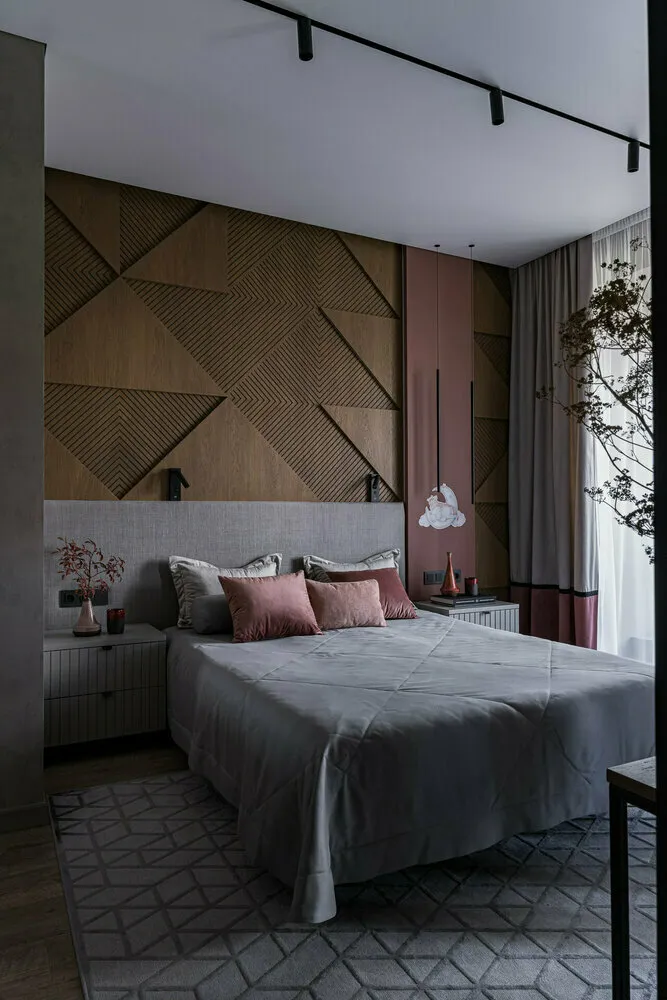
Design: Nadia KiselyanovаВiewing the bed for specific tasks
Different life situations and needs require different types of beds. Let's look at which models suit specific usage scenarios best.
For a small bedroom
Small apartments require optimizing space without compromising comfort:
Beds with storage systems — models with drawers or lifting mechanisms help solve the problem of storing bedding, seasonal clothing, or other items.
Folding beds — take up minimal space when folded but provide a full sleeping area at night. Modern models with quality mechanisms can be quite comfortable even for daily use.
Loft beds — for teenagers or adults who want to make the most of vertical space. You can place a workspace, wardrobe, or relaxation area under the sleeping area.
For a bedroom with high ceilings
High ceilings allow for experimenting with bed design:
Beds with canopy — create a feeling of solitude and luxury, and can become the central element of interior design.
- High platform beds — a stylish designer trick that allows zoning the space and creating additional storage systems inside the platform.
For families with children
Families with children have special requirements for furniture:
Slide beds — can grow with the child, increasing in length as needed.
Double-decker beds — save space in children's rooms, shared by two kids. Modern models can be equipped with ladders that have storage boxes, protective rails, and even gaming elements.
Beds with guardrails — for small children, ensuring safety during sleep.
For elderly people and those with limited mobility
As you age or if you have health problems, the requirements for a bed change:
Adjustable beds — allow changing the position of the head and foot sections for maximum comfort and ease of such actions as reading, watching TV, or eating in bed.
Beds with optimal height — about 55-60 cm from floor to mattress surface, to ensure easy getting in and out.
Beds with bedside rails — additional support when getting up.
For a guest room
A guest bed should be functional and not take up much space when not in use:
Folding sofas and sofa-beds — compact solutions for occasional use.
Roll-out beds — can be stored under another bed and pulled out when needed.
Folding beds — modern models can be quite comfortable and durable, easily foldable and taking up minimal space in a cabinet.
Popular styles and designs of beds
A bed is the central element of a bedroom, setting the tone for the entire interior. The choice of bed style depends on the overall room design and your personal preferences.
Classic beds
Traditional models with wooden or upholstered headboards, often with carved details or kapton (stitched upholstery with buttons).
Advantages:
Timeless elegance, not subject to fashion trends;
Wide selection of designs — from strict English classic to luxurious baroque;
Well-suited for other classic furniture.
Disadvantages:
Often have a bulky appearance, requiring spacious rooms;
High cost of quality models made from natural wood;
Require appropriate interior decoration.
Modern minimalist beds
Lacquered models with clear lines, without unnecessary decoration, often on low legs or directly on the floor.
Advantages:
Visually don't clutter the space;
Easily match various interior styles;
Often have built-in functional elements (drawers, shelves).
Disadvantages:
May look too strict or boring;
Low models are inconvenient for people with back problems;
Often have a limited lifespan due to the use of cheap materials.
Beds in Scandinavian style
Simplistic, functional models made from light wood or with elements of light wood, often with textile details.
Advantages:
Eco-friendliness of materials;
Light tones visually expand the space;
Fit well into modern interiors.
Disadvantages:
Light surfaces require more frequent cleaning;
Limited color palette;
Some models may not be stable enough.
Beds in industrial style
Models with steel frames, often combined with wood, with visible structural elements.
Advantages:
High strength and durability;
Original brutal appearance;
Compatibility with other furniture in the loft style.
Disadvantages:
Metal elements can feel cold to the touch;
May creak over time;
Not always suitable for classic interiors.
Beds with upholstered headboards
Models with a fabric or leather headboard, often featuring stitched patterns or decorative buttons.
Advantages:
Provide comfortable back support when sitting;
Can become a bright accent in the interior;
Reduce sound transmission through walls (especially important for multi-apartment buildings).
Disadvantages:
Fabric upholstery collects dust and requires regular cleaning;
Over time, it may lose its original appearance;
Generally more expensive compared to models without an upholstered headboard.
Practical tips for choosing and purchasing a bed
After you've decided on the type, size, and style of the bed, it's time to move to practical aspects of selection and purchase. These tips will help make the process more efficient and avoid common mistakes.
Checking quality in the store
When selecting a bed in a store, pay attention to the following:
Stability — the bed should not wobble or creak. Check this by gently shaking the structure.
Quality of assembly — inspect the joints between parts, they should be tight with no gaps or clearances.
Quality of finishing — wooden elements should be smooth, without splinters, and metal ones without signs of corrosion or poor painting.
Mattress — if the bed is sold with a mattress, lie down on it in your usual sleeping position and check the comfort.
Online purchase
If you plan to buy a bed online, consider the following recommendations:
Carefully review the description and specifications — pay attention to materials, sizes, and maximum load capacity.
Read reviews — especially useful are reviews left several months or years after purchase, as they give an idea of the bed's durability.
Clarify delivery and assembly conditions — bulky furniture may require special delivery conditions and professional assembly.
Check warranty terms — quality manufacturers usually provide a warranty on the frame for at least 2-3 years.
Saving money without compromising quality
Purchasing a bed is a serious investment, but there are ways to save without compromising quality:
Seasonal sales — furniture stores regularly run promotions, especially during seasonal collection changes.
Outlet stores and showrooms — you can find quality models with minimal defects (e.g., samples from exhibitions) at significantly reduced prices.
Secondary market — for wooden and metal frames, this can be a good alternative, especially if you plan to update only the mattress.
Caring for a bed to extend its life
Proper care can significantly extend the lifespan of your bed:
Regular inspection of fastening elements — tighten bolts and screws every 3-6 months, especially if the bed has a modular structure.
Cleaning upholstery — follow the manufacturer's instructions for cleaning textile or leather elements.
Rotating the mattress — flip the mattress according to instructions (usually every 3-6 months) for even load distribution.
Protection from moisture — use waterproof mattress protectors, especially in families with small children.
Protection from dust — vacuum the mattress and the space under the bed regularly.
Choosing a bed is an investment in your health and quality of life. Dedicate enough time to this process, carefully evaluate all parameters, and don't compromise on the quality of key elements, especially if you plan to use the bed daily for many years. Remember that good night sleep is the foundation of good health, productivity, and mood for the next day, and a properly chosen bed is the key factor determining the quality of that sleep.
Cover: Bonum Design interior project
More articles:
 7 Ideas We Spotted at a 24 m² Mini-Cottage with a Unique Interior
7 Ideas We Spotted at a 24 m² Mini-Cottage with a Unique Interior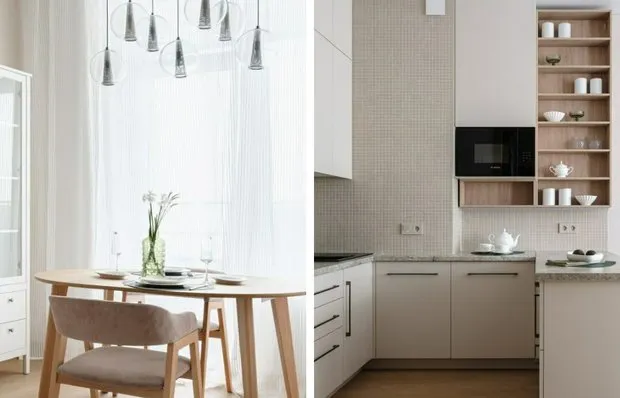 Island and Accent Display: How We Designed a Cozy Kitchen for Mom
Island and Accent Display: How We Designed a Cozy Kitchen for Mom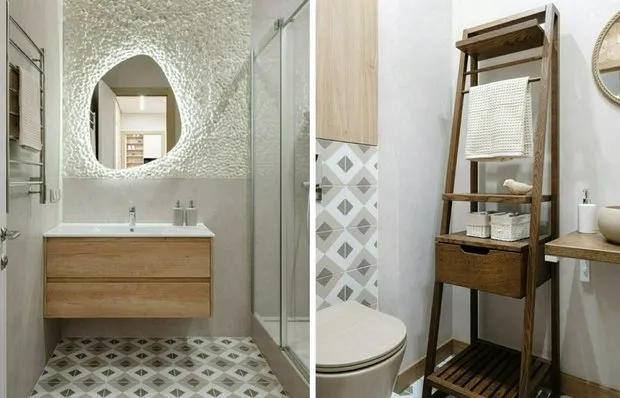 How Two Bathrooms Were Designed in One Style in a Small Euro-Style Apartment
How Two Bathrooms Were Designed in One Style in a Small Euro-Style Apartment 7 Tips for a Cozy Euro-Style Apartment of 63 m² That You Should Replicate
7 Tips for a Cozy Euro-Style Apartment of 63 m² That You Should Replicate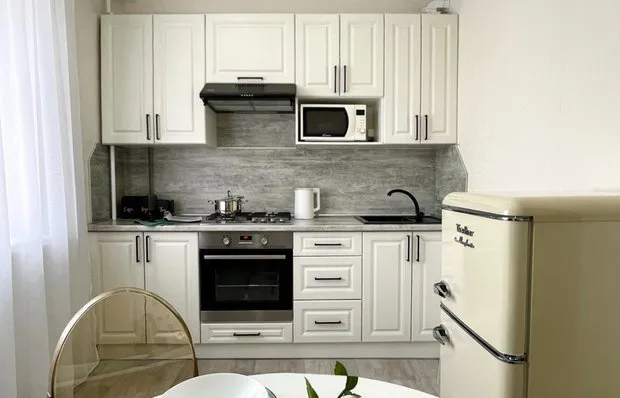 How We Transformed a 37 m² Panel Apartment into a Cozy One-Room Home in 2.5 Weeks on a Budget
How We Transformed a 37 m² Panel Apartment into a Cozy One-Room Home in 2.5 Weeks on a Budget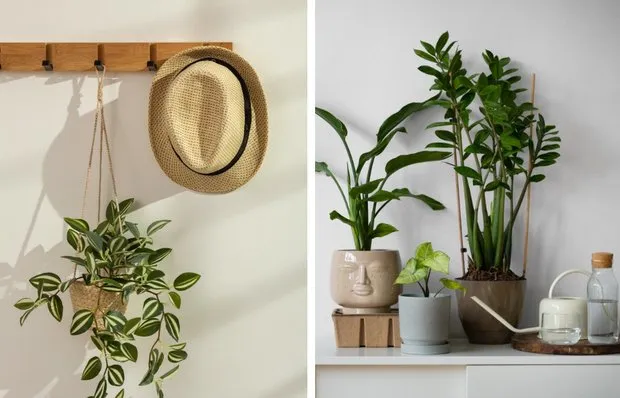 How to Incorporate Potted Plants Into Interior Design: 6 Expert Tips
How to Incorporate Potted Plants Into Interior Design: 6 Expert Tips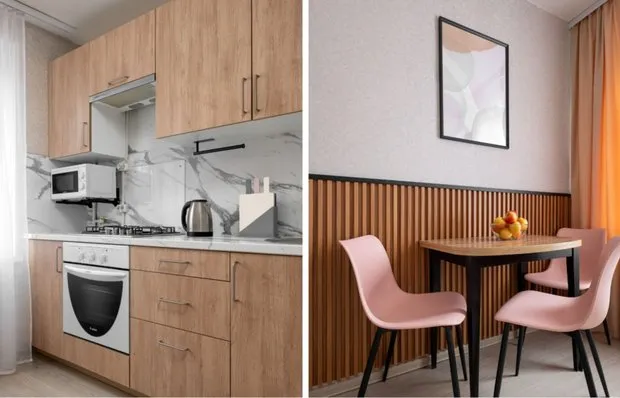 10 Ideas for a 5 m² Kitchen That Everyone Can Replicate
10 Ideas for a 5 m² Kitchen That Everyone Can Replicate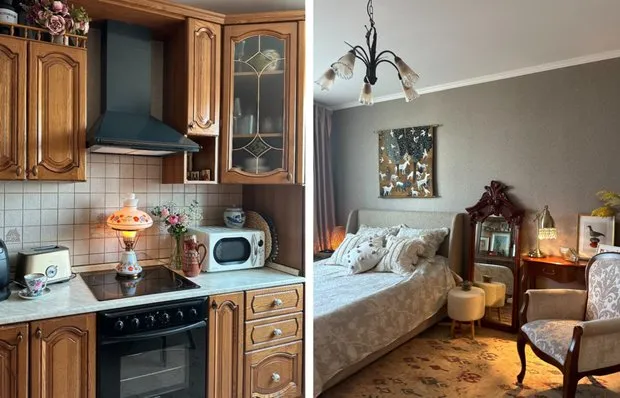 2-room apartment 55 sqm in a standard panel house where nothing has changed for 20 years
2-room apartment 55 sqm in a standard panel house where nothing has changed for 20 years